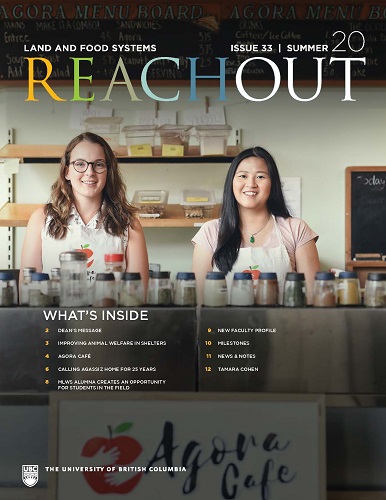MLWS Alumna Creates an Opportunity for Students in the Field

No two days are ever the same for Erika Nassichuk (BSc Applied Biology 2008, Master of Land and Water Systems 2015), who works as an Environmental Protection Officer for the District of North Vancouver (DNV). The DNV is a large suburban community nestled against the North Shore Mountains, with rugged terrain and a complex ecological system.
“Today I might be doing consultation for groundwater protection near a large-scale development project, and tomorrow I could be undertaking a bird nest survey to ensure we aren’t removing any important trees for the birds in the future,” says Nassichuk.
A certified arborist in B.C., Nassichuk started with the DNV in 2009 as an Environmental Control Technician. She later saw the Master of Land and Water Systems (MLWS) professional program as a way to move forward in her career. “The MLWS program helped me become a registered professional biologist and move forward into the role I have today.”
Fast forward to 2019, when Nassichuk noticed an opportunity to get research help from the Faculty while improving animal welfare in the district. “Residents were approaching Council after finding sick and dying owls in their neighbourhoods, which was an immediate concern, and likely the result of secondary poisoning. When Council asked my office to look into this issue, I felt this project would be a good fit for a student because they would be able to take the idea and run with it. It would require a fair amount of research and experimentation, which meant we needed someone with knowledge of scientific studies.”
After getting in touch with coordinators in the Applied Biology program, Nassichuk was successful in creating a practicum position in her office for an LFS student, as part of APBI 496: Applied Animal Biology Practicum. Kimmia Abdollahi, a current student majoring in Applied Animal Biology, was successfully placed in the practicum and began her work in the summer of 2019.
“Over a total of 300 hours that summer, I was able to conduct two experiments,” said Abdollahi. “The first was looking into whether rodenticides were being used at sites that do not have a rat problem, which involved setting up bait stations in both urban and forested areas. The bait was weighed twice a week to determine if there was any rat activity, and we later added cameras. While we found deer mice, raccoons and skunks, there was no evidence of rats.”
“The second experiment explored an alternative to rodenticides for controlling rat populations – a Goodnature trap. These humane traps are designed to deliver a CO2 powered piston to the rat’s head, instantly killing it. Since the trap does not use any toxins, the dead rat can be safely scavenged by other animals. While we again found no evidence of rats entering these traps, we did see other animals.”
Ultimately, Abdollahi’s experiments found that while bait boxes containing rodenticide are commonly used by the public, there may not always be a rat issue to begin with. In fact, other animals may be exposed to the poison, which creates a ripple effect in the food chain when they are eaten by larger animals, such as owls.
“The results from the practicum were not what we expected to see, which shows just how important it is to take the time and conduct the research,” said Nassichuk. She did note that in further experiments later that year, her team did find evidence of rats using the traps.
“We were so pleased with the professional skills and academia that Kimmia brought to the project, and in the future will look to hire another LFS student to return and continue the project. The next steps will involve outreach to the public regarding rodenticide use and promoting the alternatives.”
Tagged with: 2020, Alumni, Master of Land and Water Systems
